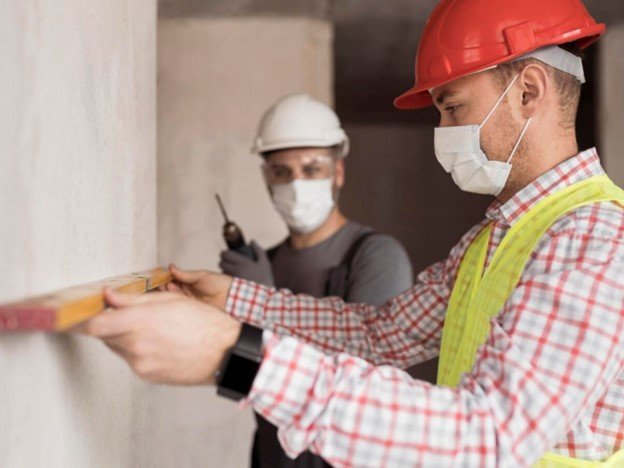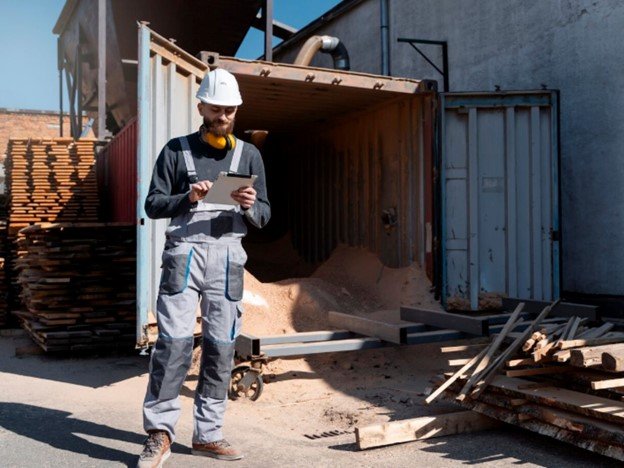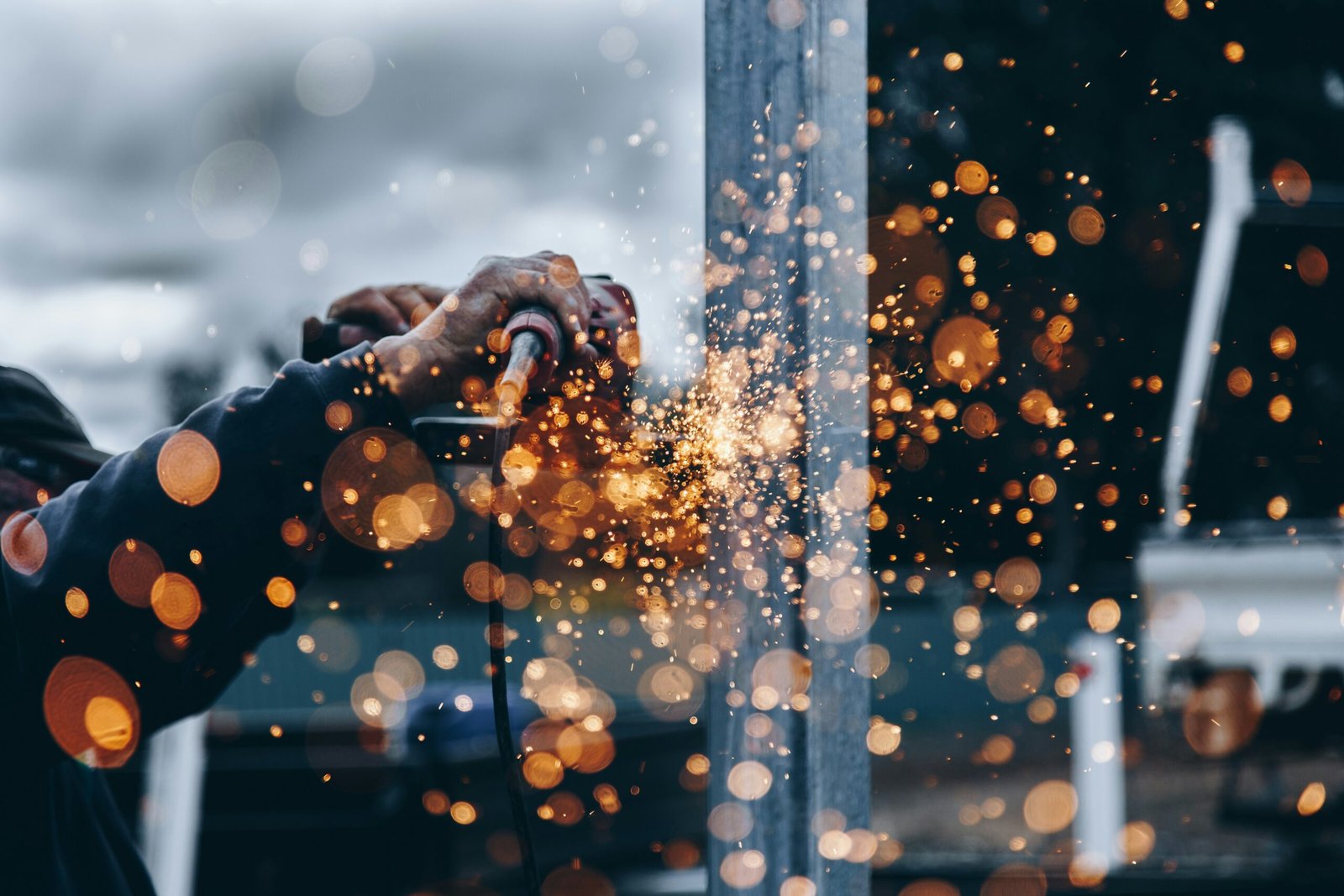Comprehensive Guide to Construction Maintenance Services in the Philippines

Introduction to Construction Maintenance Services
construction maintenance services
Construction maintenance services encompass a broad range of activities aimed at ensuring the continued functionality, safety, and aesthetic appeal of buildings and infrastructure. These services are crucial for the longevity of structures, as they involve regular inspections, repairs, and upgrades that prevent the deterioration of building elements. By addressing wear and tear promptly, construction maintenance services help in averting expensive repairs and potential safety hazards.
The scope of construction maintenance is extensive and includes tasks such as electrical system checks, plumbing fixes, roof repairs, and HVAC system maintenance. Regular maintenance also covers the upkeep of structural components like walls, floors, and foundations. These services are not limited to emergency repairs but are proactive measures designed to sustain the quality and integrity of a building over time.
One of the primary reasons for the importance of construction maintenance services is the prevention of costly repairs. Neglecting minor issues can lead to significant problems that require extensive and expensive interventions. For instance, a small leak in the roof, if left unattended, can cause extensive water damage, compromising the structural integrity of the building and leading to high repair costs. Regular maintenance helps in identifying such issues early on, allowing for timely and cost-effective solutions.
Additionally, construction maintenance services ensure compliance with local regulations and safety standards. In the Philippines, buildings must adhere to specific codes and standards to guarantee the safety of occupants and the public. Regular maintenance checks help in ensuring that all systems and structural elements meet these requirements, thus avoiding potential legal issues and fines.
construction maintenance services
In summary, construction maintenance services are indispensable for the long-term sustainability and safety of buildings. By incorporating regular maintenance into the lifecycle of a structure, property owners can safeguard their investments, enhance the lifespan of their buildings, and ensure compliance with local regulations, thereby creating safe and habitable environments for all occupants.
Overview of the Construction Industry in the Philippines
The construction industry in the Philippines has experienced significant growth in recent years, driven by robust economic development and increased government spending on infrastructure projects. According to the Philippine Statistics Authority (PSA), the construction sector’s contribution to the GDP has consistently risen, with the industry growing by 9.7% in 2021. This growth is bolstered by the “Build, Build, Build” program, a government initiative aimed at modernizing the country’s infrastructure, which has led to the initiation of numerous high-profile projects.
Major players in the Philippine construction industry include both local and international firms. Notable local companies such as EEI Corporation, Megawide Construction Corporation, and DMCI Holdings, Inc. have been instrumental in shaping the landscape. Additionally, multinational corporations like Leighton Asia and Samsung C&T have established a strong presence, contributing to the industry’s competitive environment. These companies are engaged in various projects ranging from residential and commercial buildings to large-scale infrastructure developments such as highways, airports, and railways.
construction maintenance services
Current trends in the industry reflect a growing emphasis on sustainable building practices and the integration of advanced technologies. Green building certifications and the use of eco-friendly materials are becoming more prevalent as developers aim to meet global standards and reduce environmental impact. Furthermore, the adoption of Building Information Modeling (BIM) and other digital tools is enhancing project efficiency and accuracy, thereby driving innovation within the sector.
As the construction industry continues to expand, there is a corresponding increase in the demand for professional maintenance services. The rise in the number of completed projects necessitates ongoing upkeep to ensure the longevity and safety of both commercial and residential structures. This trend underscores the importance of reliable construction maintenance services in maintaining the integrity and functionality of the built environment in the Philippines.
construction maintenance services
Types of Construction Maintenance Services
In the Philippines, construction maintenance services encompass a broad spectrum of activities essential for preserving the longevity and structural integrity of buildings. These services can be categorized into routine inspections, preventive maintenance, corrective maintenance, and emergency repairs. Each type of maintenance service plays a critical role in ensuring that buildings remain safe, functional, and aesthetically pleasing.
Routine Inspections: Routine inspections are periodic assessments conducted to identify potential issues before they escalate into significant problems. These inspections typically cover various aspects of a building, including structural elements, electrical systems, plumbing, and HVAC systems. By regularly monitoring these components, maintenance teams can detect wear and tear, leaks, or other minor issues that may require attention.
construction maintenance services
Preventive Maintenance: Preventive maintenance involves scheduled activities aimed at preventing equipment and system failures. This type of maintenance includes tasks such as cleaning, lubricating, adjusting, and replacing worn parts before they fail. Preventive maintenance is crucial in construction maintenance services as it helps extend the lifespan of building components and reduces the likelihood of unexpected breakdowns.
Corrective Maintenance: Corrective maintenance, also known as reactive maintenance, is performed to rectify issues that have already occurred. This type of maintenance addresses problems such as broken fixtures, malfunctioning equipment, and structural damage. Corrective maintenance ensures that any defects are promptly fixed, thereby minimizing disruption to building operations and maintaining safety standards.
Emergency Repairs: Emergency repairs are immediate responses to unexpected and urgent issues that pose a threat to the safety or usability of a building. Common scenarios requiring emergency repairs include burst pipes, electrical failures, and structural damages caused by natural disasters. Swift action is essential in these situations to prevent further damage and ensure the safety of occupants.
By understanding and implementing these types of construction maintenance services, building owners and managers in the Philippines can effectively maintain their properties, ensuring long-term durability and safety.
Key Benefits of Regular Maintenance

Regular construction maintenance is paramount in extending the lifespan of buildings. By addressing minor issues promptly, larger, more costly repairs can be avoided. This proactive approach not only preserves the structural integrity of the building but also enhances the safety of its occupants. For instance, routine inspections and maintenance of electrical systems, plumbing, and fire safety equipment can prevent hazardous situations, ensuring a safer environment.
In addition to safety, regular maintenance significantly improves energy efficiency. Proper upkeep of heating, ventilation, and air conditioning (HVAC) systems ensures they operate at optimal performance, reducing energy consumption and, consequently, utility costs. For example, cleaning or replacing air filters regularly can enhance airflow and efficiency, leading to substantial energy savings over time.
Aesthetic appeal is another crucial aspect of regular maintenance. Buildings that are well-maintained tend to look more attractive, which can be particularly beneficial for commercial properties. A clean, well-kept exterior and interior can make a positive impression on clients and visitors, potentially leading to increased business opportunities. For residential properties, maintaining curb appeal can attract potential buyers and renters, contributing to higher property values.
Case studies have demonstrated the long-term cost savings associated with regular maintenance. For example, a study on a commercial building in Metro Manila revealed that consistent maintenance reduced repair costs by 30% over five years. Moreover, the building’s overall value increased by 15% due to its well-maintained condition. These findings underscore the financial benefits of investing in regular maintenance.
In summary, the advantages of regular construction maintenance are multifaceted, encompassing extended building lifespan, enhanced safety, improved energy efficiency, and maintained aesthetic appeal. These benefits collectively lead to long-term cost savings and increased property value, highlighting the importance of regular upkeep in the construction industry.
construction maintenance services
Challenges in Construction Maintenance
The construction maintenance sector in the Philippines faces several significant challenges that can hinder the efficiency and effectiveness of maintenance activities. One of the most prominent issues is budget constraints. Allocating sufficient funds for maintenance can be difficult, especially for smaller projects or organizations with limited financial resources. This often leads to deferred maintenance, which can escalate into more severe and costly problems over time.
Another critical challenge is the lack of skilled labor. The construction industry in the Philippines suffers from a shortage of qualified and experienced maintenance workers. This scarcity can result in subpar maintenance work, further exacerbating the deterioration of structures and increasing the risk of accidents. To mitigate this issue, investment in training and development programs is essential to build a competent workforce capable of meeting the demands of the sector.
Logistical difficulties also pose a significant challenge in construction maintenance. The Philippines, being an archipelago, often faces transportation and supply chain issues, especially in remote or rural areas. These logistical hurdles can delay maintenance activities and increase costs. Establishing efficient supply chains and leveraging local resources can help address these logistical challenges, ensuring timely and cost-effective maintenance operations.
construction maintenance services
Natural disasters, such as typhoons, earthquakes, and floods, are another major concern for construction maintenance in the Philippines. The country’s geographical location makes it highly susceptible to these events, which can cause substantial damage to infrastructure. Implementing disaster-resilient construction practices and regular maintenance checks can help mitigate the impact of natural disasters, ensuring the longevity and safety of structures.
To overcome these challenges, a multifaceted approach is necessary. This includes securing adequate funding, investing in workforce development, optimizing logistics, and adopting disaster-resilient construction techniques. By addressing these issues, the construction maintenance sector in the Philippines can enhance its capacity to maintain infrastructure efficiently and sustainably.
Best Practices for Effective Maintenance
Ensuring the longevity and functionality of construction projects in the Philippines necessitates adherence to best practices in maintenance. One of the cornerstone strategies is scheduling regular inspections. Routine checks allow for the early detection of potential issues, thereby preventing minor problems from escalating into costly repairs. Property owners and managers should establish a maintenance schedule that includes periodic assessments of structural integrity, electrical systems, plumbing, and other critical components.
construction maintenance services
Employing high-quality materials is another vital practice. Utilizing premium-grade materials not only enhances the durability of the construction but also reduces the frequency of maintenance required. It is essential to source materials from reputable suppliers to ensure they meet the necessary standards and specifications. Additionally, maintaining an inventory of these materials can expedite repairs and minimize downtime.
The importance of employing skilled professionals cannot be overstated. Qualified maintenance personnel bring expertise and experience, ensuring that all tasks are performed to the highest standards. Investing in continuous training for these professionals can keep them abreast of the latest techniques and technologies in the construction maintenance industry. This, in turn, translates to more efficient and effective maintenance practices.
Leveraging technology for predictive maintenance is an emerging best practice that can significantly enhance maintenance outcomes. Predictive maintenance involves using data analytics and monitoring tools to foresee potential failures before they occur. This proactive approach allows for timely interventions, ultimately reducing the risk of unexpected breakdowns and extending the lifespan of the construction. Property managers should consider integrating such technologies into their maintenance strategies to optimize performance.
For property owners and managers, it is crucial to develop a comprehensive maintenance plan that incorporates these best practices. Regularly reviewing and updating this plan ensures that it remains aligned with the latest industry standards and technological advancements. By following these recommendations, property owners and managers can achieve optimal maintenance outcomes, ensuring the safety, reliability, and longevity of their construction projects in the Philippines.
construction maintenance services
Selecting the Right Maintenance Service Provider

Choosing the appropriate construction maintenance service provider in the Philippines is a critical decision that can significantly impact the longevity and safety of your structures. To ensure that you select the right provider, several key factors should be taken into consideration. Firstly, evaluate the experience of the service provider. A company with a robust track record in the industry is more likely to deliver reliable and high-quality maintenance services. Experienced providers are well-versed in addressing a myriad of maintenance issues, which can save you time and resources in the long run.
Reputation is another crucial factor. Look for maintenance service providers that have garnered positive feedback from past clients. Customer reviews and testimonials can offer valuable insights into the reliability and competence of the provider. Additionally, reputable companies often have certifications and accreditations from recognized industry bodies, which can serve as a testament to their commitment to quality.
construction maintenance services
The range of services offered by the provider is equally important. Opt for a company that offers comprehensive maintenance services that align with your specific needs. Whether it’s routine inspections, emergency repairs, or specialized maintenance tasks, a provider with a diverse service portfolio is better equipped to handle various aspects of construction maintenance.
When evaluating potential service providers, it’s also advisable to scrutinize their service contracts. Ensure that the terms and conditions are transparent and that there are no hidden costs. The contract should clearly outline the scope of services, response times, and any warranties or guarantees provided. This clarity can prevent misunderstandings and disputes down the line.
Lastly, assess whether the service provider adheres to industry standards and best practices. Compliance with local regulations and safety standards is non-negotiable. A provider that prioritizes these aspects is more likely to deliver services that enhance the safety and durability of your construction projects.
By carefully considering these factors, you can make an informed decision and select a construction maintenance service provider in the Philippines that meets your specific requirements and upholds the highest standards of quality and reliability.
Future Trends in Construction Maintenance
The construction maintenance industry in the Philippines is poised for transformative changes, driven by emerging technologies and a heightened focus on sustainability. One of the most significant advancements is the integration of drones for maintenance inspections and monitoring. Drones can access hard-to-reach areas, providing high-resolution imagery and data that facilitate precise assessments and timely interventions.
Artificial Intelligence (AI) is another innovative force reshaping construction maintenance. AI-powered systems can predict potential issues before they become critical, optimizing maintenance schedules and reducing downtime. Machine learning algorithms analyze vast amounts of data from sensors and historical records, identifying patterns and recommending preventative measures. This predictive maintenance approach not only enhances efficiency but also extends the lifespan of infrastructure.
The Internet of Things (IoT) is revolutionizing the way maintenance tasks are managed. IoT-enabled devices and sensors are embedded into building components, continuously monitoring their condition and performance. Real-time data collection allows for immediate detection of anomalies, enabling swift action to mitigate risks. This interconnected network of smart devices ensures that maintenance activities are data-driven, precise, and proactive.
Sustainability is becoming a cornerstone of modern construction practices, and maintenance is no exception. Green building practices are increasingly emphasized, with a focus on energy efficiency, waste reduction, and the use of eco-friendly materials. Innovations like smart HVAC systems, energy-efficient lighting, and sustainable water management solutions are integral to maintaining green buildings. These practices not only reduce the environmental footprint but also result in long-term cost savings.
As these trends continue to evolve, the construction maintenance industry in the Philippines is expected to become more efficient, sustainable, and technologically advanced. Embracing these innovations will be crucial for companies aiming to stay competitive and meet the growing demand for sustainable infrastructure solutions.

Leave a Reply